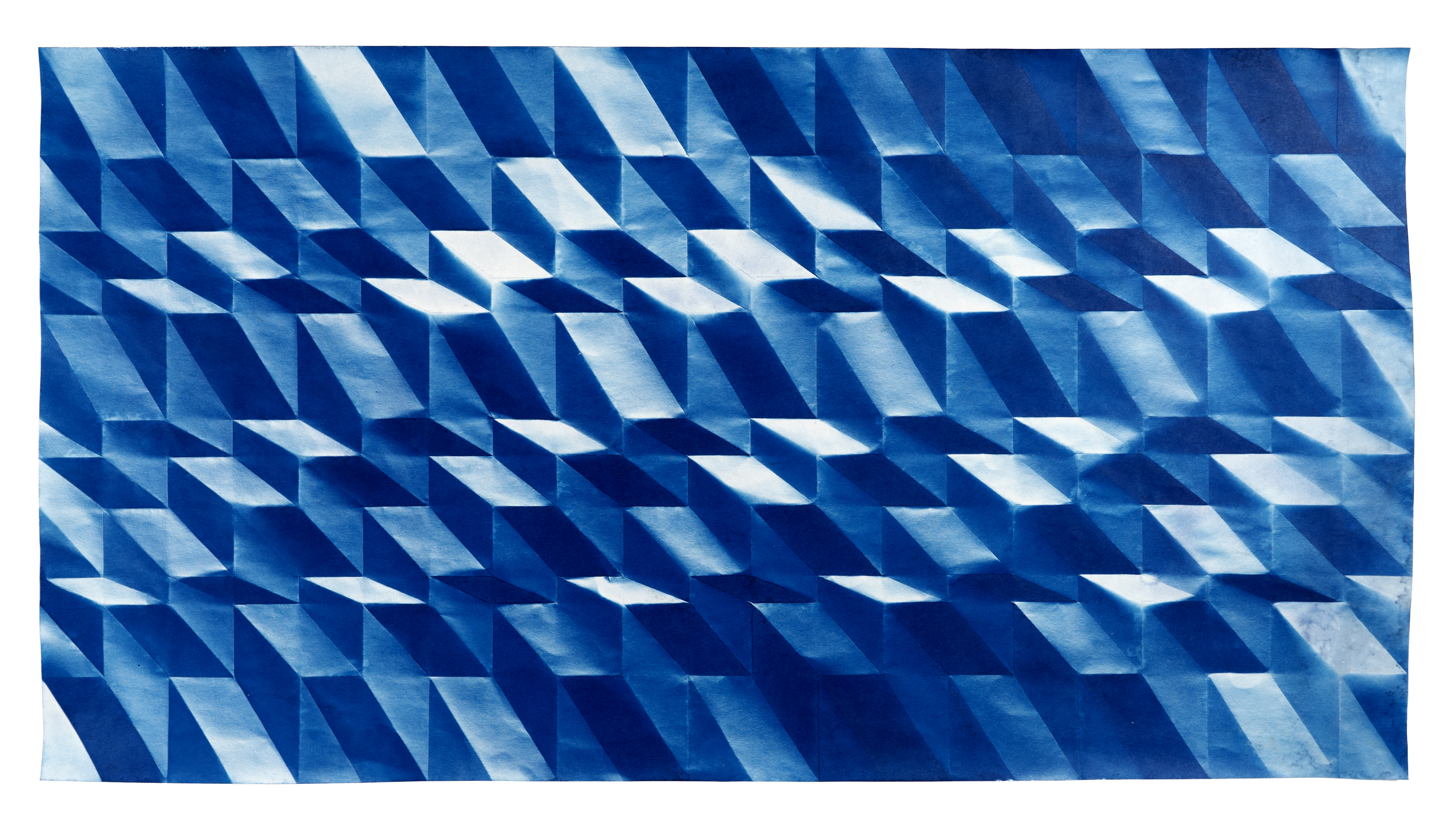ABOUT THE EXHIBITION
Valleys and Blue Light: Sculptures and Folded Cyanotypes by Fritz Horstman
Light and shadows, landscapes, voids, and reversals; the subjects of Fritz Horstman’s forthcoming exhibition are simultaneously very much of the everyday world and also something less easily defined. His Folded Cyanotypes are a series of two-dimensional objects, which carry the memory of light, three-dimensional space, and manual manipulation, and which stem from his interest in natural structure. They are at once sculptures, prints, and drawings, which also fit comfortably into the history of cameraless photography. Made by exposing folded cyanotype-coated paper to sunlight, then flattening it, what was touched by light in the process turns blue when developed, and what was not remains white.
Horstman’s U-Shaped Valley sculptures began in 2016 while looking at glaciers in Svalbard, north of the Arctic Circle. Instead of recreating glaciers, he began making sculptures that took on the shape of the land below the glaciers, which was of course a valley. Using a wide range of materials, the work elegantly conflates layers of culture and geology. The sculptures range in size from a few inches across up to six feet long. Craft and process draw connections between the landscapes we inhabit and the materials with which we surround ourselves.
Materials and the processes used to manipulate them transform objects of the everyday world in ways that are both apparent and mystifying. The physical and figurative space of a valley becomes a container for ideas about the landscape and how humans fit into it, change it, and use it. The deceptive depth of the Folded Cyanotypes slips back and forth in dimensionality, reading as flat paper, as the memory of when they were folded, and as a depiction of shapes suspended in an indeterminate space. Both bodies of work conflate the subjective and objective, overlap form and void, and dance between flatness and three-dimensionality. The viewer is asked to position themselves in the spaces between and to bridge these dichotomies.
About Fritz Horstman:
Fritz Horstman is an artist, curator, and educator based in Bethany, Connecticut. In addition to his exhibition at the New Britain Museum of American Art, he has upcoming solo exhibitions at Municipal Bonds in San Francisco and at Planthouse Gallery in New York. Recent residencies include The Arctic Circle Residency and The Bauhaus Residency, with an upcoming residency in northern Michigan at Tusen Takk. He has curated exhibitions across Europe and the US, including Anni Albers: In Thread and On Paper, which was most recently at the Blanton Museum of Art in Austin and was previously at the New Britain Museum of American Art. He is Education Director at the Josef and Anni Albers Foundation and author of Interacting with Color: A Practical Guide to Josef Albers’s Color Experiments.
